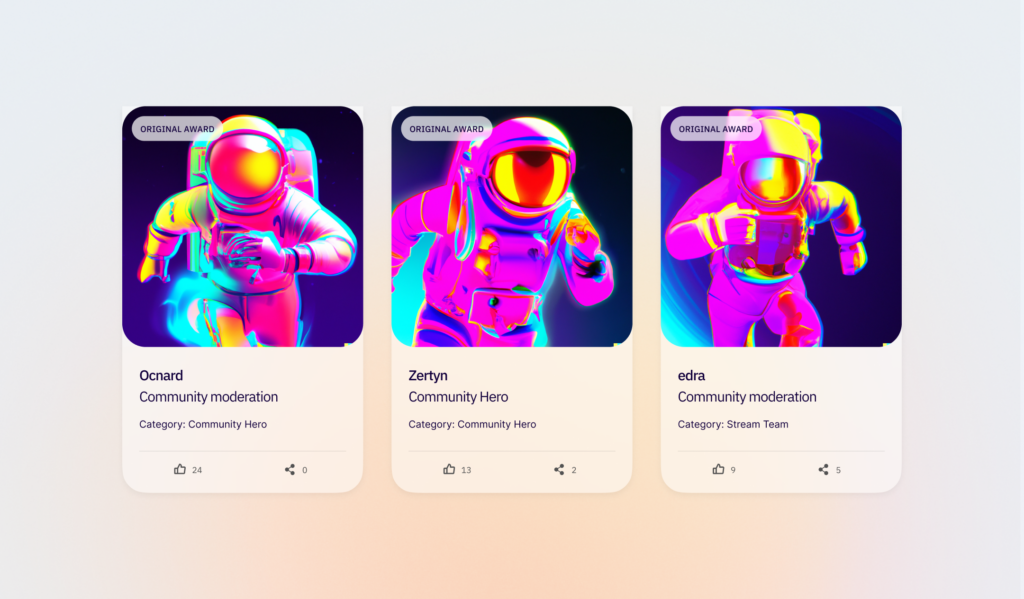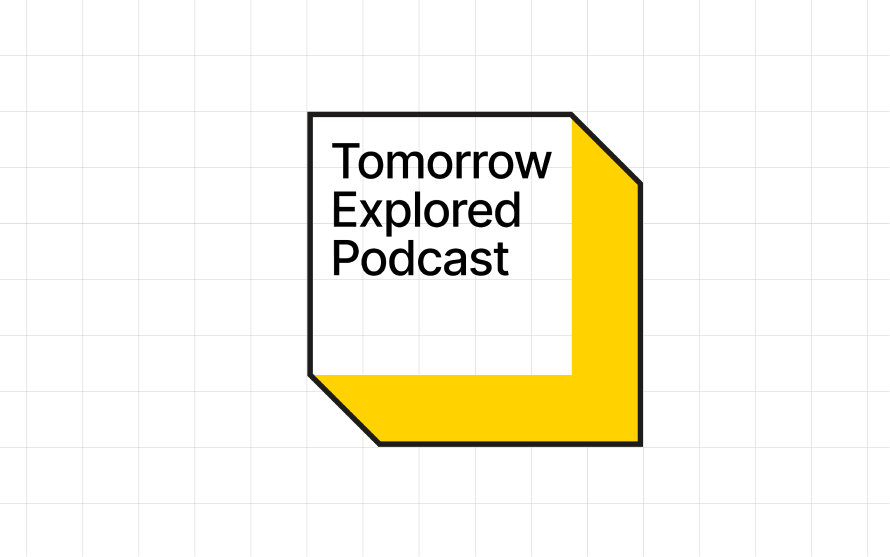2023-03-30

Marketing Lead at TX
In the rapidly evolving online economy, businesses that embrace innovation and adapt to new technologies often gain a competitive edge. Web3 is changing the rules of the game, offering enhanced security, data privacy, and groundbreaking innovations in the digital space. In this blog post, I’ll answer seven essential questions a Web3-curious business owner should be asking.
If you’re completely new to the scene, you should also check out my blog post explaining 10 key concepts in Web3 in simple terms.
Let’s go!
- What is Web3 and why is it important?
- What is blockchain technology and how is it related to Web3?
- How can Web3 improve my business?
- What are smart contracts and what are their benefits?
- What are decentralized applications (dApps) and how can they help my company?
- How can companies use tokens and cryptocurrencies?
- How can I start incorporating Web3 into my business?
1. What is Web3 and why is it important?
Web3 introduces a fundamental shift in how we interact with online services. At the extreme, it will remove the need for central authorities and intermediaries and empower users to have more control over their own data, digital assets, and online transactions. Web3 is likely to shift the power structures of current online economies. However, some degree of centralization and authority is likely to remain.
The innovations developed under the Web3 ethos are another critical aspect of why businesses should pay attention to what’s bubbling under. Web3 technologies can potentially disrupt traditional business models and create new opportunities in various industries. As the technology matures, we may soon see new applications and services that are more resilient, transparent, and equitable than those currently dominating the online market. This development may also lead to a more inclusive digital economy, benefitting people and businesses.
For example, Hivemapper is challenging Google Maps using Web3 technology to crowdsource high-quality street view data. In essence, people purchase Hivemapper’s dashcams, drive around town, and receive tokens for their effort. The data and tokens become increasingly valuable, incentivizing people to join the action. And right now, they appear to be racking up kilometers faster than Google.
2. What is blockchain technology and how is it related to Web3?
Blockchains are decentralized digital ledgers that record transactions and data across multiple computers. Each “block” is a set of grouped-up information linked, or “chained,” to another block.
The relationship between blockchain technology and Web3 is fundamental because blockchains are the backbone for many Web3 applications and services. By providing a decentralized and secure foundation, blockchains are the foundation for operating platforms without central authorities or intermediaries.

3. How can Web3 improve my business?
The discussion of Web3’s potential generally focuses on creating novel ways to drive stakeholder engagement, increasing transparency and trust, building more robust data security and privacy, and decreasing reliance on intermediaries.
It is essential to understand that a company doesn’t need to “go all-in” on Web3 to take advantage of its innovations. Although loyalty programs can be built with “traditional” software development, Web3 may open new ways to drive people’s engagement. If that’s the case, then why not make the switch? Let’s explore some examples.
- Driving engagement: By utilizing tokens and cryptocurrencies, businesses could reward customers for their loyalty, participation, and contributions, fostering a more engaged and committed community.
For example, an e-commerce platform could create a token-based system that rewards both vendors and buyers for participating in the community. Vendors could earn tokens for achieving sales milestones or receiving positive reviews. At the same time, buyers could be rewarded for writing reviews, sharing content on social media, or participating in product-related discussions. In addition to discounts on future purchases and access to exclusive events, tokens could be used to gain voting rights on the platform’s development decisions.
Token-based systems can provide more flexible and customizable reward mechanisms, leading to more unique loyalty programs and user experiences beyond the usual points-for-discounts model. Tokenization could incentivize active participation in the community and create a vibrant and supportive ecosystem. - Adding transparency and trust: Public blockchains can improve trust in a company’s products and services, enhance collaboration with partners, and even streamline regulatory compliance by providing a clear and verifiable record of transactions and data.
For example, transparency in the form of a public blockchain showing transactions and actions creates a verifiable and trustworthy platform. Customers could use that information to evaluate whether a sustainable company acts as green as they claim. In Spain, blockchain technology is used to verify the origins of local cider products.
- Reducing the need for intermediaries: Businesses may streamline operations, cut costs, and improve efficiency using direct, peer-to-peer interactions.
For example, Decentralized Finance (DeFi) initiatives attempt to remove traditional intermediaries, such as banks, payment processors, and other third-party service providers, who often charge fees for their services.
4. What are smart contracts and what are their benefits?
Smart contracts are pre-described actions that run on blockchain networks, automatically enforcing the terms and conditions set by the involved parties. Or, more simply, if X happens, then do Y. They can help automate processes, reducing the time and resources required to manage and execute contracts. Additionally, smart contracts can provide a high level of security and transparency, enhancing trust between parties and reducing the risk of disputes or fraud.
In supply chain management, smart contracts could automate payment once a shipment reaches its destination. The smart contract would execute the payment only when the predetermined conditions are met, such as a GPS location check or a digital signature from the warehouse manager. This would increase efficiency and build trust among the parties involved by minimizing the possibility of disputes or misunderstandings related to payment terms.
It might sound cliché, but smart contracts can do just about anything.
5. What are decentralized applications (dApps) and how can they help my company?
Decentralized applications are software applications built on decentralized networks that can operate without centralized control. Unlike traditional applications, which channel data through a central authority, dApps facilitate direct interactions between users.
However, dApps aren’t inherently better than traditional centralized applications, they are still a relatively new technology and can be troublesome regarding UX/UI and scalability. Having an intermediary presence can be helpful in dispute cases. The potential of dApps over traditional applications depends on the technology’s specific use case.

6. How can companies use tokens and cryptocurrencies?
Tokens and cryptocurrencies are digital assets facilitating transactions and enabling new business models. Tokens can represent various digital and real-world assets, hold value, and serve as a medium of exchange. We’ve already mentioned how blockchains and decentralization can provide value to businesses. Well, tokens are the third staple ingredient in the mix of better security, privacy and efficiency.
If you have made it this far, you are probably familiar with bitcoins and other cryptocurrencies being used for payment. Connecting cryptos with monetary value is the basic proof-of-concept for tokens. Similarly to smart contracts being able to hold various information, tokens can store or represent many types of information, like voting power in communities, a sales item’s status during delivery, gain access to restricted content or events, and so on.
Depending on who you ask, some might say that everything can or will be tokenized in the near future. From a business perspective, it is also important to explore why something should be tokenized.
7. How can I start incorporating Web3 into my business?
Incorporating Web3 into your business involves several steps, but by breaking it down into manageable tasks, you can gradually transition to a Web3-enabled business model. Here are some simple steps to get you started:
- Educate yourself and your team: Start by learning about the core concepts of Web3, blockchain technology, and decentralized applications. This will help you better understand the benefits and challenges of adopting Web3 solutions.
- Identify relevant use cases: Analyze your business operations and identify areas where Web3 technologies could add value, such as payment processing, supply chain management, or customer engagement. Focus on use cases that align with your business goals and can deliver tangible benefits.
- Seek expert advice: Consult with Web3 experts or technology partners who can guide your business on the most suitable solutions. We are so used to services being run by a centralized party that it is difficult to overturn the models we are used to. Web3 solutions require more robust planning than the current service design methods allow, such as ecosystem design.
- Implement and test: Start by incorporating Web3 solutions into specific areas of your business, such as accepting cryptocurrency payments or leveraging decentralized identity management. Monitor the impact of these changes, gather feedback, and iterate as needed to optimize the implementation.
By taking a strategic and incremental approach toward adopting Web3, you can minimize disruption to your existing operations and gradually unlock the benefits of a more decentralized, secure and transparent digital ecosystem. If you wish to future-proof your business, now is the time to learn.
Thanks for reading. Did I miss a crucial topic? What would you like to know more about? My feedback channels are always open!
Related posts

(The lack of) utility in Web3 – Tomorrow Explored Podcast
In this episode, we find out why Web3 projects often lack utility and what are the elements to keep in mind when setting up your Web3 idea toward success.

Service Design is not enough for Web3 – an update is in the works
Service design is doing a great job, and so is its sibling UX design. We’ve all enjoyed the results in the form of better working apps and web services. But it’s good to realize that service design is a practice tailored for Web2 and its mainstream adoption dates back to the rise of digital platforms one or two decades ago. There’s an update in the works for Web3, and it’s called ecosystem design. I’ll explain in this post what it’s all about.
Find out more
For information on how we can transform your sector or business, please schedule a meeting or get in touch using the contact details below.



